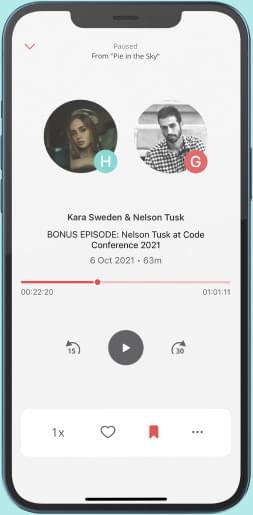
Have you ever heard the saying: “Not my circus, not my monkeys”? I use it all the time, yet never realized that it is translated from Polish. Dr. Lynne Bowker, professor of translation technologies and information systems at the University of Ottawa, recently returned from Poland, where she was collaboratively researching ways to make academia more language inclusive. Scholars from around the world are encouraged to publish and attend conferences in English, yet fewer than 10% of the researchers in the world are Anglophones. In fact, for many it’s their second, third, or even fourth language. Imagine being a world expert in a subject but unable to share your findings and learn from others unless you speak English. With pressing global issues such as food insecurity, global warming, refugees, war, and more, Dr. Bowker set out to find ways in which AI translation or Machine Translation (MT) could help. Dr. Bowker specializes in language technology. In her recent book, “Demystifying Translation,” she explains why AI and MT translation are today not yet able to solve the issues related to cross-lingual communication – there are limits to what the technology can do and it’s not trustworthy. The biggest challenges facing authors in academia are the ability to: Read others’ writings. Write in English. Leveraging AI/MT varies for each of these situations. To tackle the first challenge, the researcher can use automated translation to get the “gist” of what an article says and, with their specialized knowledge, do a pretty good job of figuring out its meaning. In the second scenario, non-English speaking researchers typically don’t possess English writing skills strong enough to clearly write their findings. This means that they would need to pay someone to write it or have a highly skilled translator edit their original draft. To simplify access to research, the academic community must get to the point of accepting publications in a researcher’s native language, with readers relying on AI/MT for gist translations. Lacking this option, many researchers will continue to opt out of publishing or presenting at conferences to share important research. At the same time, Dr. Bowker stresses the importance of recognizing that language technology is not perfect and ultimately requires nuanced discussion and experienced judgment regarding where and how to use it. It’s not merely a discussion as to whether AI/MT will replace humans in translation. Ironically, automated machine technology is old tech. In the 1940s during World War 2, experts developed tools to decipher what the enemy was saying – spying tools, essentially. The technology relied on dictionaries and linguistic rules for grammar to translate, and had particular trouble with synonyms (two meanings for one word) and polysemies (words with more than one meaning – for example “pen,” as in a writing pen or play pen). Ultimately, the technology was used only by professional translators because it was not good enough to release. Throughout the ‘80s and ‘90s, the technology in general improved – it became faster, smaller, and required less storage. Programmers started thinking of new ways to process language – by using data-driven approaches instead of linguistic rules. Translation quality improved in general but still fell far short of high quality. Current advances have changed from data-driven analysis to pattern identification, whereby machine language learning develops a memory by ingesting vast amounts of multilingual text. Without the large amounts of data, the technology is useless. Dr. Bowker recalls a time when Canadian weather forecasters struggled to hire English-French translators because the work was so repetitive – the words and format were always the same. After a few months, even new undergraduate translators quit from boredom. By leveraging AI/MT, the organization could save time, money, and effort. Technology still struggles with: Languages that have less content – languages like Welsh and Danish have fewer speakers, thus less content is produced. It’s challenging enough to develop a machine learning (ML) model that can translate from English to Welsh, let alone from Welsh to Danish. Unusual topics – in research, topics are usually novel and don’t have a gathered history of translation. This challenges the technology to find appropriate translations. Hallucinations – one team set out to test whether AI could properly classify an animal as a huskie or a wolf. After training the model on hundreds of pictures, its responses were mostly accurate; however, upon further inspection the researchers figured out that the model had been trained to identify wolves by snowy backgrounds, versus huskies in backyards. Thus, the model looked at the wrong information. Training for proper identification of skin lesions produced the same outcome – the model identified cancerous lesions by looking for a ruler in the picture. Misogynism and racism – models learn and parrot back what it ingests and, simply put, the Internet provides lots of questionable content. The bottom line, according to Dr. Bowker, is that while we are still far away from a world in which automated translation can replace human translation, the language industry will only benefit from educating people on proper and effective translation methods, in the meantime. When translating your material, remember the iron triangle (aka project management triangle), which illustrates how the balance among three project constraints – scope, time, and budget – affects quality. Adjusting for any one constraint necessarily affects one or both of the other variables: Fast and cheap = lower quality Fast and quality = very expensive High quality = pricey and slow Finally, we agree that the industry conversation will turn toward the increasing need for experts in global content strategy. Think about the content along your buyer’s (or stakeholder’s) journey – from first encounter to raving fan. A thoughtfully planned strategy alongside clearly defined processes and technologies will guarantee high-quality content for every audience, while saving your employees time and effort. Links: Book: https://www.routledge.com/De-mystifying-Translation-Introducing-Translation-to-Non-translators/Bowker/p/book/9781032109244 With a Creative Commons (CC BY-NC-SA) license: https://www.taylorfrancis.com/books/oa-mono/10.4324/9781003217718/de-mystifying-translation-lynne-bowker LinkedIn: https://www.linkedin.com/in/lynne-bowker-0112996/?originalSubdomain=ca Email: lbowker@uottawa.ca Connect with Wendy - https://www.linkedin.com/in/wendypease/ Music: Fiddle-De-Dee by Shane Ivers - https://www.silvermansound.com
From "The Global Marketing Show"


Comments
Add comment Feedback